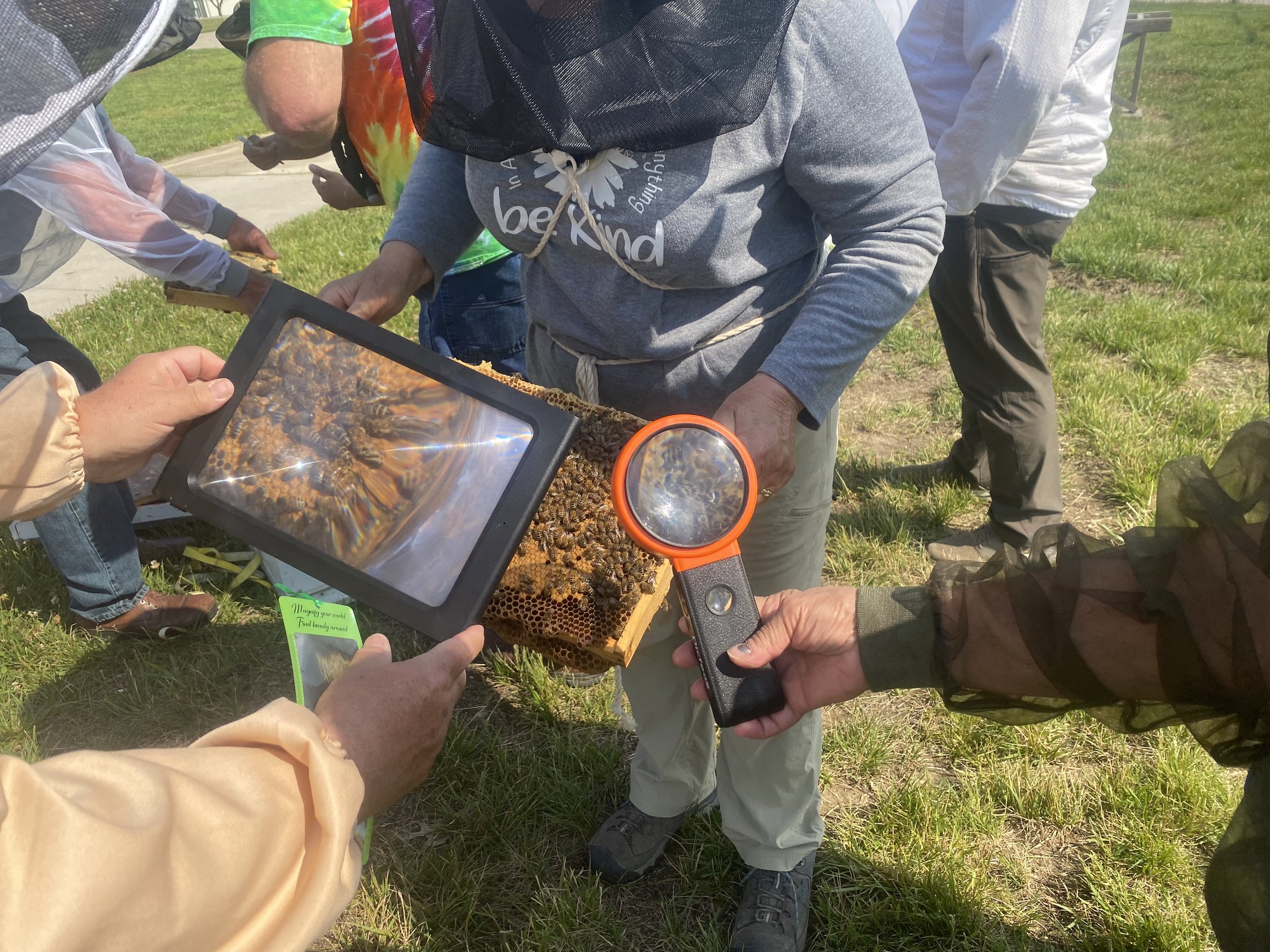June Beekeeping Chores
/June is when beekeepers try to keep up with their bees nectar and pollen collecting. (Photo by Charlotte Ekker Wiggins)
June Beekeeping Chores
If you’ve tried to see a beekeeping friend this month, or even talk to them, don’t take it personally if they don’t respond. June is a very busy month for beekeepers keeping up with the quick growth of their colonies.
It’s quick growth if the colonies are healthy, have a good queen bee and the bees have access to plants to collect nectar and pollen. Nectar to bees is flight fuel; they collect it this time of year and dehydrate it to have food over winter. Pollen is baby food, it’s what nurse bees mix with royal jelly to feed larvae.
If a colony is not healthy, beekeepers are managing the colony to get it there before the food source stops.
Here are some of the June beekeeping chores for mid-Missouri:
Are your colonies queen right? If not, add open brood from another colony so bees can raise their own queen.
Do your existing queen bees have room in the brood box to lay? Remove nectar-full and pollen-full frames to give the queen room to lay. Move those frames to an upper box.
Monitor how much nectar they are bringing in. The nectar flow ends when temperatures are over 86F.
This time of year, check colonies every 7-10 days. Look at the bottom of frames for swarm cells.
If you haven’t monitored for Varroa mite levels, do it now as you inspect colonies so you have a benchmark for how colonies are doing.
Make sure your bees have access to water near their hives. I have bird baths close to their hives as well as a deck rug they seem to like as well. Keeping water sources close by will reduce their interest in visiting your neighbor’s swimming pool.
Note what plants are blooming within 2 miles of your colonies.Plan on planting trees and shrubs that will provide them with more nectar and pollen. It takes 2 million flowers to make one pound of honey.
















































